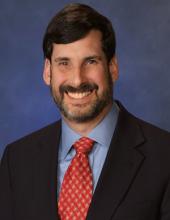Do The CMS’ ‘Zebras’ Need To Change Their Stripes?

Super Bowl Week ended with the San Francisco 49ers and 161 U.S. hospitals having something in common.
Both were publicly penalized, both lost money as a result and both passionately believed the process was unfair.
The penalty that pained the 49ers occurred shortly before halftime of Super Bowl LIV, when offensive pass interference was called on tight end George Kittle. The call negated a big gain that might have enabled the 49ers to take the lead.
Replays showed that the referees – nicknamed “zebras” for their black-and-white striped shirts – were technically correct in their decision. Nonetheless, controversy erupted over whether given other possible penalties called or overlooked, this one deserved a yellow flag.
Hospitals call that kind of context “risk adjustment.” A few days before the Super Bowl, the Medicare program blew the whistle on a group of hospitals having high rates of infection and other patient injuries. The hospitals who are outliers in what are blandly labeled “hospital-acquired conditions” (HACs) suffer a cut of one percent in their Medicare payments over next fiscal year.
Like that interference penalty, cries were immediately heard that the “refs” – otherwise known as the Centers for Medicare & Medicaid Services (CMS) – were “arbitrary and unfair,” as a Kaiser Health News story summarized the objections.
The obvious solution would be better “zebras.” In football, that might mean more training and even more instant replay cameras.
Judgment calls might seem less important in parsing electronic data from hospitals. After all, the actual care plays out in private. You won’t see a former-surgeon-turned-color-commentator regaling a TV audience about the deftness of a diseased organ’s removal only to bemoan the sloppiness of leaving a few sponges inside the patient.
Yet judgment calls inevitably shape CMS’s choices of measures and how to apply them in practice. Medicine is even more complicated than the football rulebook, so it’s difficult sometimes to assess whether a penalty is truly a bad call or whether the hospital is loudly protesting as part of a strategy athletes call “playing the ref.”
While there are arguments for and against a “no-call” on both Kittle and some of the hospitals penalized by CMS, there is one area where hospital objections deserve special attention. In a written statement to Kaiser Health News, UCSF Medical Center blamed its high rate of HACs on its thoroughness in identifying infections in order to then eliminate the causes.
“This commitment will naturally make our rates appear to be higher,” the hospital said.
Better risk adjustment can’t account for risks that aren’t reported. How do you address the problem of hospitals whose approach to HACs is “Don’t ask, don’t tell”? Instead of thinking about more ways to catch wrongdoers, maybe we need to think more deeply about culture.
This brings us to a sport that is the diametric opposite of the full-contact, noisy, adrenaline-charged, win-at-all-costs world of pro football: golf.
There are judges in golf tournaments, even if they don’t wear zebra-striped shirts. However, from the time golfers begin playing as amateurs, a code of honor is instilled that requires them to mark their cards with a penalty if they commit a rules violation. Routinely, even for violations no one else sees and even when the stakes are high, they do exactly that.
“High school golfer calls penalty on herself, loses state title,” read one 2018 headline. Professionals do the same. In a major 2018 tournament, Phil Mickelson, one of the highest-ranking golfers in the world, assessed himself a two-stroke penalty for violating a rule.
The system isn’t infallible, of course. Judgment calls remain, and people are people. Nonetheless, the example of golf should remind us that the hospital executives and clinicians who today are calling penalties on themselves deserve a level playing field.
A disturbing 40% of respondents to a nationwide survey on hospital safety culture by the Agency for Healthcare Research and Quality agreed with the statement that “hospital management seems interested in patient safety only after an adverse event happens.” Meanwhile, as I wrote in a recent article in the Health Affairs Blog, it’s the consensus of veteran patient safety experts that while many hospitals are trying to improve safety, fewer than 10% are seriously committed to zero preventable harm.
The rules and the penalties need to be made as fair as possible, but better “zebras” alone won’t put patients out of danger. We must build a culture that reminds hospital executives and clinicians why they went into this field. That means creating an ethical environment where everyone at the hospital pursues perfection in patient safety as avidly as golfers seek a perfect game.
Unlike the Super Bowl, that’s an approach where all sides can be winners.
Michael L. Millenson is president of Health Quality Advisors LLC and adjunct associate professor of medicine at Northwestern University Feinberg School of Medicine. A version of this article was originally published at The Health Care Blog






